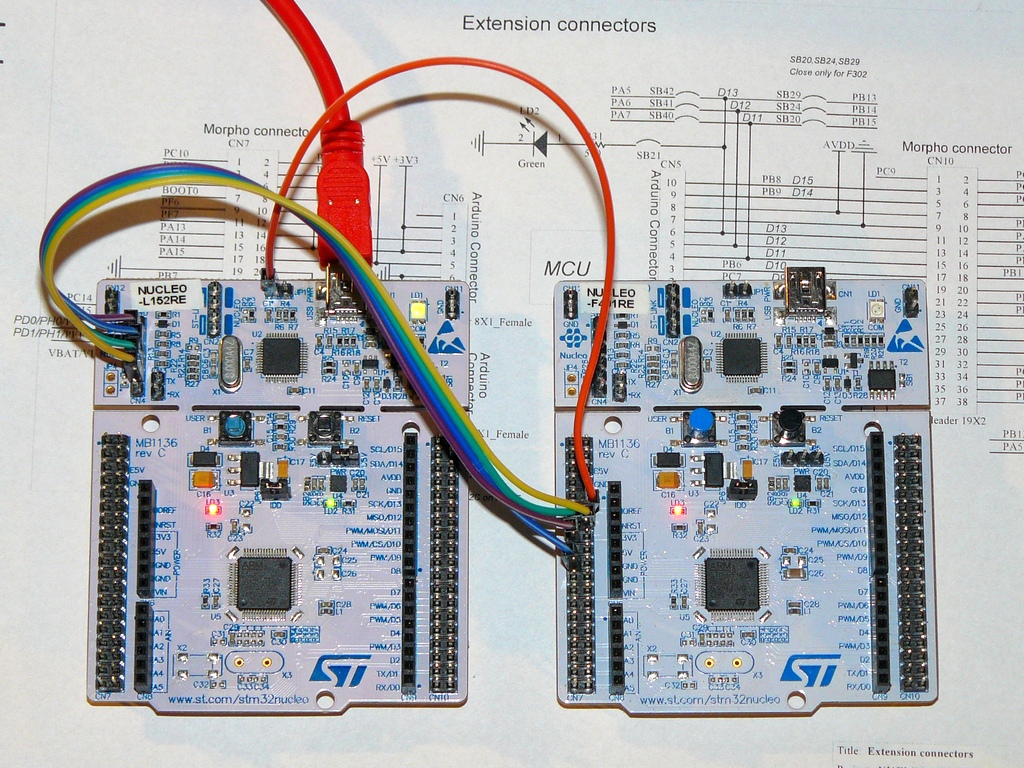
The board can be cut into two pieces to minimize its size. This is not only limited to the STM pin, but it also has an internal burner for both Arduino and STM pins which can be used directly from computers.
Gpio pins on nucleo f401re install#
It supports the PC to install the drivers automatically and link the board to it without relying on any third interface. The USB can be attached to the board through pins and its USB port. Sometimes method developers can find it difficult due to their limited data on the internet. The board STM32F401RE supports multiple debug methods, which allows the user to test and program the controller in multiple ways.

The board also offer the external crystal pins which are:īoard also support multiple resets. For Arduino IDE, the oscillator should be 16MHz but for other IDE the crystal can be variate or choose from internal or external. The board has internal oscillators of 16MHz and 32KHz. The IOREF pin is only one in the whole board and it common with Arduino pins. It will allow the board to operate according to 3V. In case of using the 3.3V for power up the device, the IOREF pin should be active. The 3.3-volt pins are connected through regulators. The other 5V and Vin pins in all headers can be used for 5V. VBAT and E5V have protections and only for input. The boards’ givens the power outputs of 5V and 3.3V all the 5V outputs are connected directly expect VBAT and E5V. The power pins on Nucleo F401RE and Arduino are: The STM32 board can be turn on by using the 3.3 and 5V but the whole board can only power up through 5V. There are multiple power input pins for both boards. There are multiple power pins and method to power up the board and all of them are: Power Input

These pins can communicate with external I 2C modules. It is based on two pins with a clock and a data pin. There are multiple pins for I 2C protocol.

In Nucleo F401RE has multiple SPI pins which are: Multiple devices of the same kind can be controlled by a single SPI module. Two for clock and device selection and two for data.
Gpio pins on nucleo f401re serial#
SPI protocols are also a kind of serial communication that uses four-wire for communication.

The UART on Arduino only allows communicating a single UART device. All these pins allow the multiple UART module to communicate with the board at a time. There are multiple UART communication pins in the Nucleo F401RE. D11 – GPIO12 Serial Communications in STM32 Nucleo F401RE UART Communication Pins.These PWM pins use a Prescaler to break the single cycle of the clock pulse to generate the output signal. All PWM pins can generate the desired output signal to control the external peripherals. PWM pins are available in both STM32 and Arduino.


 0 kommentar(er)
0 kommentar(er)
